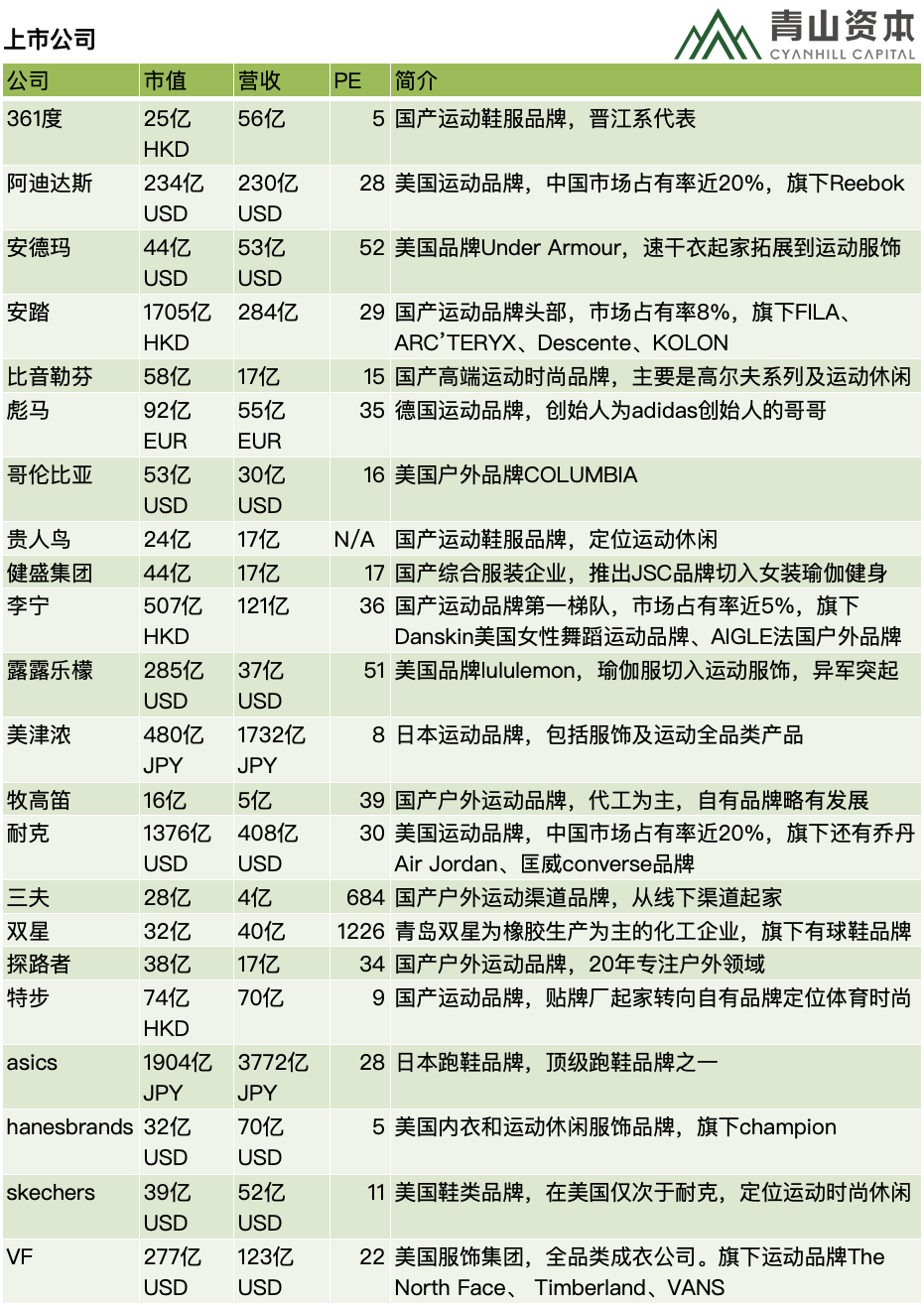300 billion sportswear is still growing at a high speed. National fitness is the driving force, and the new national tide is the wings.
Editor’s note: This article comes from the WeChat public account “Qingshan Capital” (ID: cyanhillvc) , author : Qingshan Capital Investment Research Center.

“Qingshan Consumer Products Category Overview” is a category overview formed by Qingshan Capital from the research results of each segment of consumer products, extracting the industry map of hot categories and some important content, and in the form of a series of articles with investors and Entrepreneurs share. Welcome to discuss in the message area, exchange views and industry cooperation opportunities.
The sports apparel market is about 300 billion yuan. The compound growth in recent years has surpassed that of children ’s wear, approaching 20%. It is the fastest-growing segment of the apparel industry. Other listed companies in the apparel category are basically facing the impact of consumption iterations in 2019, and the growth rate of revenue and profits has slowed down or even declined significantly, while sportswear brands have experienced rapid growth in all categories and all channels. Product upgrades and high-end branding are all important reasons. The underlying driving force is the country’s emphasis on sports, the introduction of various policies, and the corresponding bases of various sports populations such as running, fitness, cycling, swimming, ice and snow sports. Rapid improvement, so sportswear still has a good growth trend for a long time.
Sportswear (and related equipment products) is a pro-economic cycle industry. The economy will develop rapidly, the life will be affluent, and the overall consumption will increase rapidly when consumption is upgraded. At present, sports-related industries, especially outdoor sports, have become the most important economic growth engine in developed countries one.
In terms of categories, the global jogging market has grown significantly. In January 2020, Danish sportswear brand Hummel (based on football and sponsoring the Danish national team) acquired Danish brands Newline and Halo to help Hummel open the jogging shoe market. In recent years, major domestic sports brands have also taken advantage of the enthusiasm of local governments for holding marathons and relying on running-related product lines to promote continuous sales growth.
Yoga and women ’s fitness markets are growing more rapidly. From 2017 to 2019, lululemon’s growth is remarkable, especially in the Asia-Pacific region, with an annual growth of 45%. The outbreak and investment of international / domestic women’s yoga apparel brands are endless. “Athleisure” (a compound word of Athletics and Leisure, or “sports and leisure style”) wears sports underwear and leggings into the street everyday, which has become popular in Europe and AmericaIn China, this trend has turned sports singles into trend symbols, opened the door to new categories, and opened up the possibility of sportswear trending towards the trend and casual wear market.
The following are atlases of different types of businesses in the sportswear track, including startups with public information. I also hope you can add it, see the interactive topic at the end of the article for details.
Company map

Note 1: The data comes from recent public disclosure by listed companies, and the default currency for unlabeled currencies is RMB
Note 2: Sort by the first letter of the company ’s Chinese name, the table below is the same


Because of the deep foundation of the supply chain, a large number of similar head brands such as Anta, Xtep, 361 Degrees, Jordan, Peak, Hongxing Erke, Noble Bird, Delhui, etc. have gained a certain popularity under advertising And the market, but in the last less than 10 years, in the efforts of new product development, product design, brand technology sense and fashion sense, a huge gap has been opened, forming the shape of Anta and Li Ning. Maintaining high-speed growth, other brands have basically been thrown away more than one position, income decline and even delisting and demise. Anta fought bravely from the second echelon behind Li Ning that year. Revenue grew from 8.9 billion yuan with Li Ning in 2011 to 33.9 billion in 2019, 2.4 times that of Li Ning. The high expectations of the sportswear market after the 2008 Olympics created huge inventory problems